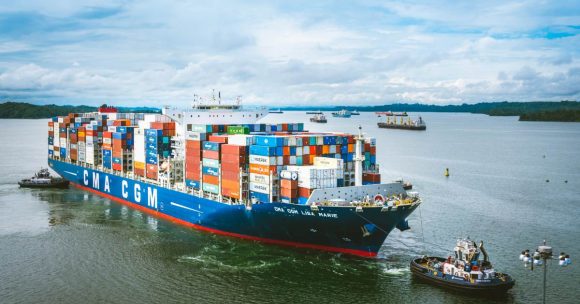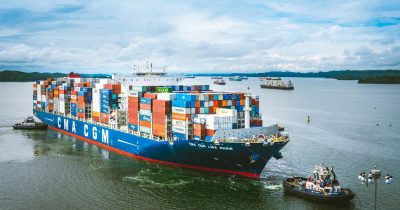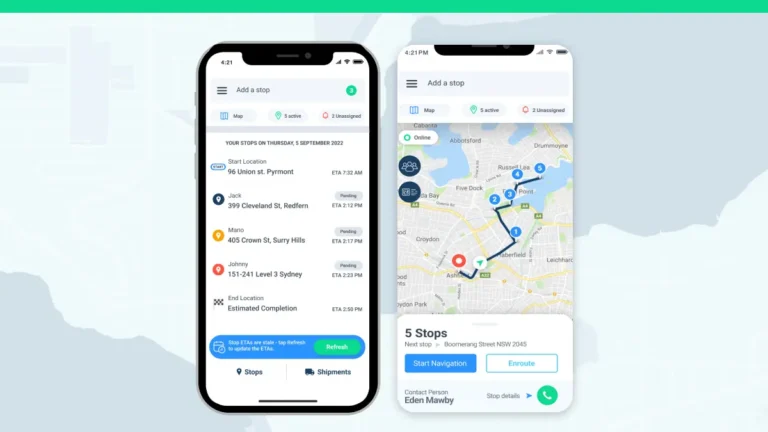The Port of Virginia will now provide services that will directly link to the Latin American market.
The authority’s CEO Stephen Edwards says this is an important step to directly do business in some growing, important markets in South and Central America.
There previously was no connection that called to the South Americas. As a result, most poultry exports had to be transported via transhipment. This new development will allow the Port of Virginia to become more competitive in this area of business in both directions, north- and southbound.
“This is going to create an opportunity for perishable commodities and seafood imports coming into Virginia and for exports of products like pork and poultry headed to the west coast of South America,” says Edwards.
Ocean carriers join for shipping
Coming together for this initiative are ocean carriers CMA CGM and Ocean Network Express (ONE). The CMA Americas XL and the ONE FLX will now link The Port of Virginia to ports in Columbia, Peru, Chile, Ecuador, Columbia and Panama.
As part of the new connection, The Port of Virginia is the last stop on the US East Coast. This will allow exporters more time to get their goods to the port and to the international destination faster.
The other service being offered is by Mediterranean Shipping Company (MSC). It has added South and Central American port calls of its Ecuador NWC service to its Scan Baltic service.
US Port with clean energy powered terminals
Last month, The Port of Virginia announced it is powering its terminals completely with electricity from clean resources. It operates 116 electric stacking cranes, four electric rail cranes and 27 electric ship-to-shore cranes.
The Environment Protection Agency in the US has a Clean Ports program. Some of the program’s goals include building “a foundation for the port sector to transition over time to fully zero-emissions operations using domestically-produced equipment, positioning ports to serve as a catalyst for transformation change across the freight sector.”
Shipping industry holding its breath
Shipping and logistics firms have all been watching to see how business could be affected as a result of the Red Sea crisis. This week, media reports stated that the EU launched a mission to protect maritime traffic at the Red Sea. This may show that businesses involved in shipping and logistics have to hang on just a little longer until the crisis dissipates.
Locate2u has been closely watching developments around the Red Sea crisis since it started in October 2023.
The Red Sea is a crucial corridor connecting the Mediterranean Sea, Indian Ocean and beyond. Its strategic location gives shippers access to Europe, Asia, and Africa. The Red Sea route is the natural sailing route between these regions.
The impact on business had been massive, with some shipping lines having to suspend routes and re-route vessel sailings to accommodate customers. To keep business moving, shipping companies have chosen to divert shipments around the Cape of Good Hope.
Shippers have also been looking to airfreight as an alternative to sea freight. Rerouting of a vessel is no easy task and the costs are massive. Companies looking to get goods to customers on time will look at the airfreight option.
In a blog post last month, the International Monetary Fund (IMF) says, “Shipping costs between Asia and Europe have increased markedly, as Red Sea attacks reroute cargoes around Africa. While disruptions remain limited so far, the situation remains volatile.
Now Read: Red Sea: What’s happening to the shipping and logistics business?
About the author
Sharl is a qualified journalist. He has over 10 years’ experience in the media industry, including positions as an editor of a magazine and Business Editor of a daily newspaper. Sharl also has experience in logistics specifically operations, where he worked with global food aid organisations distributing food into Africa. Sharl enjoys writing business stories and human interest pieces.











